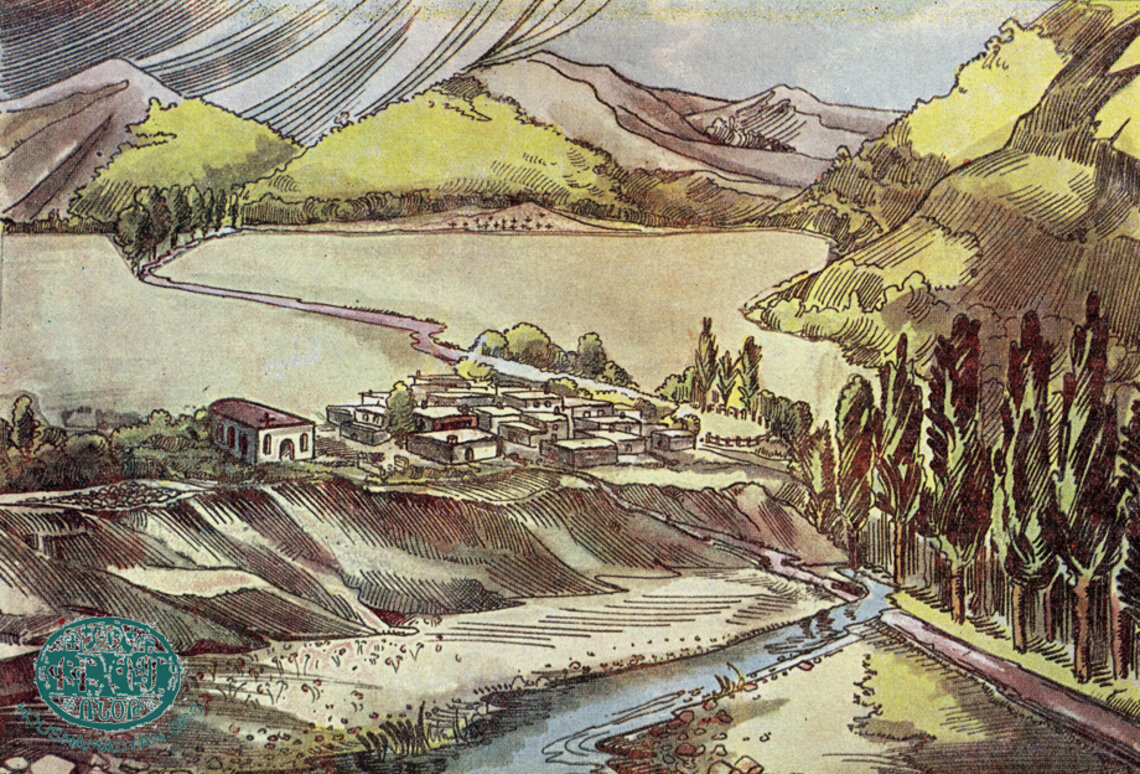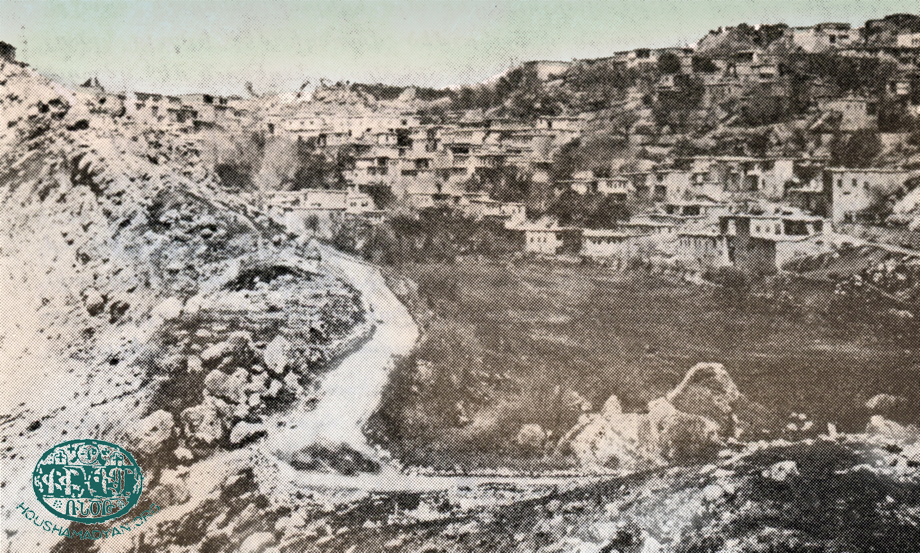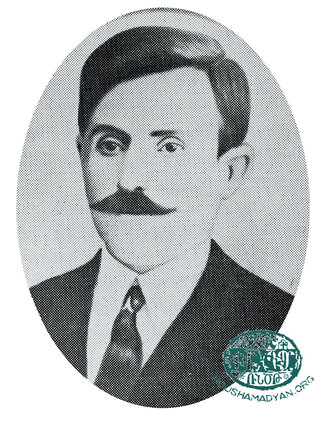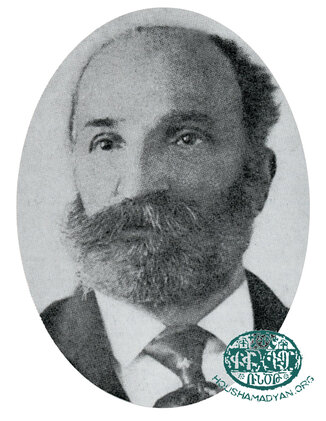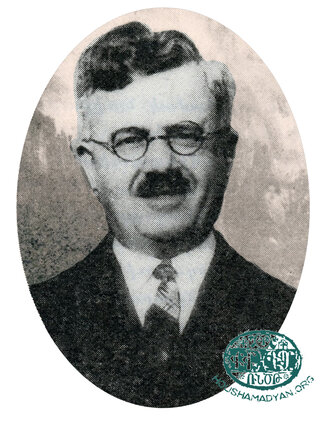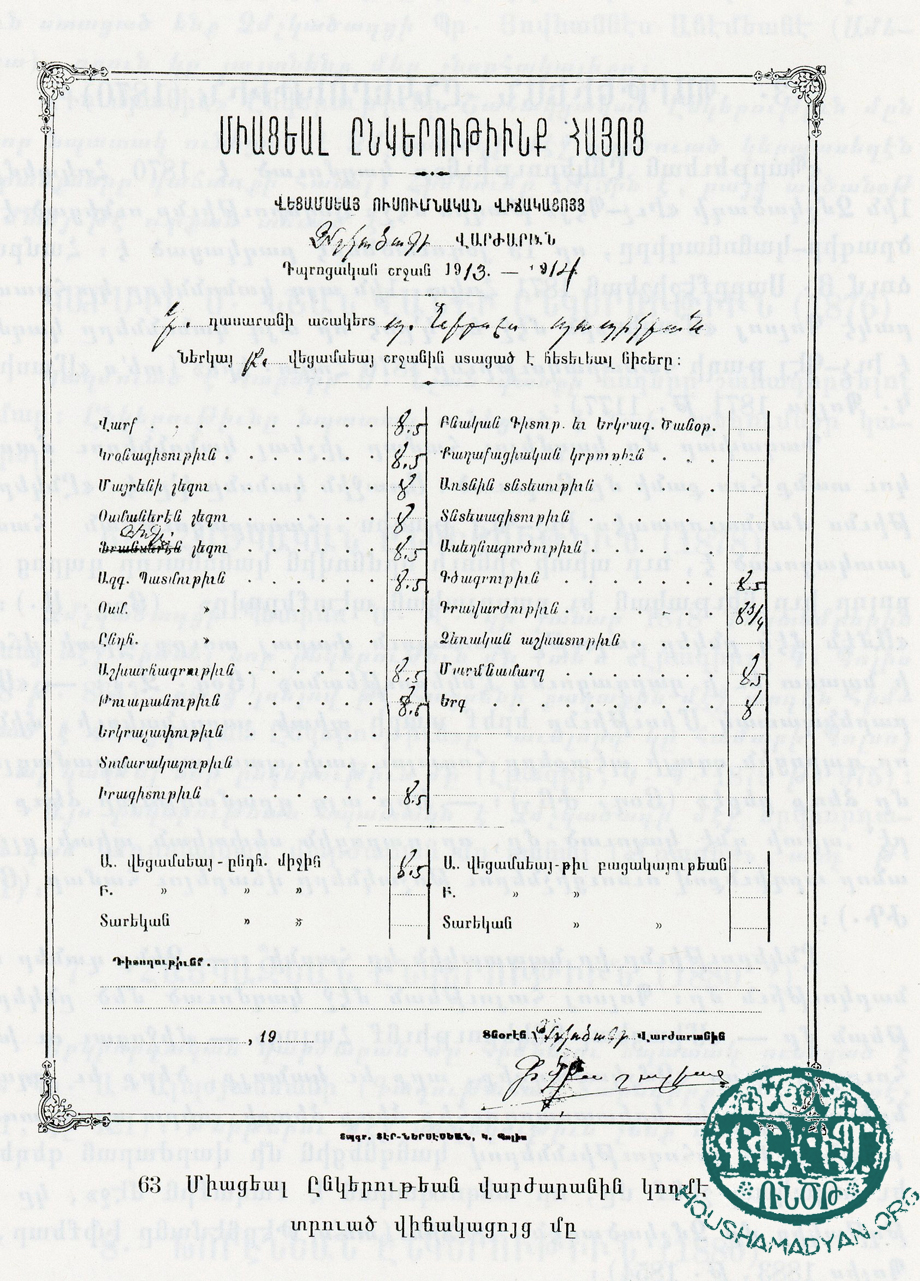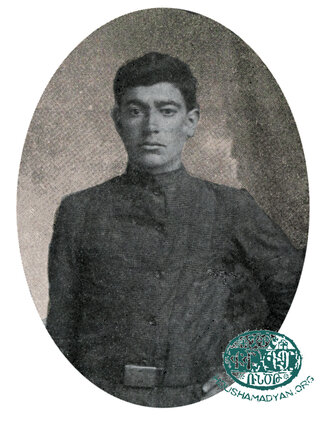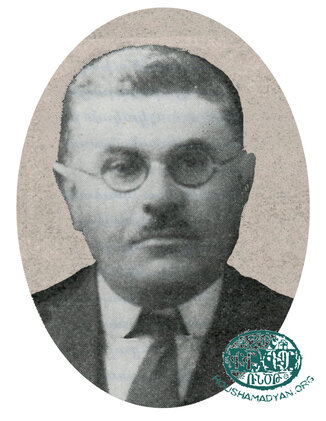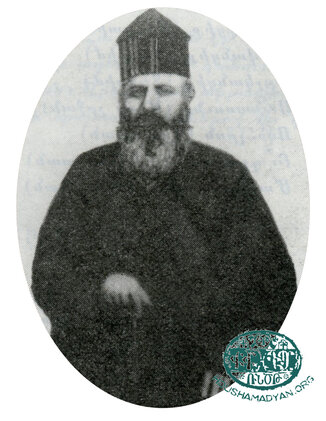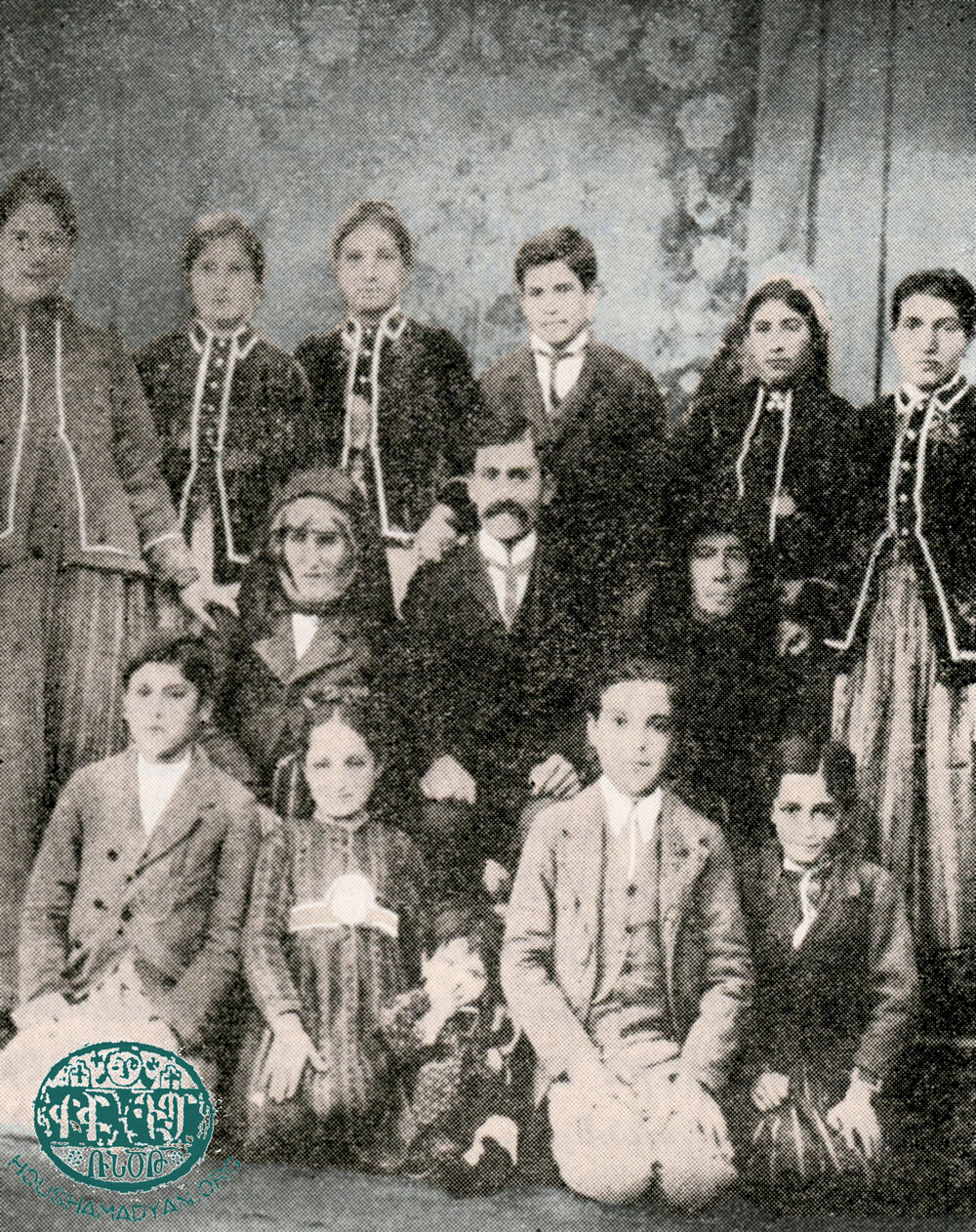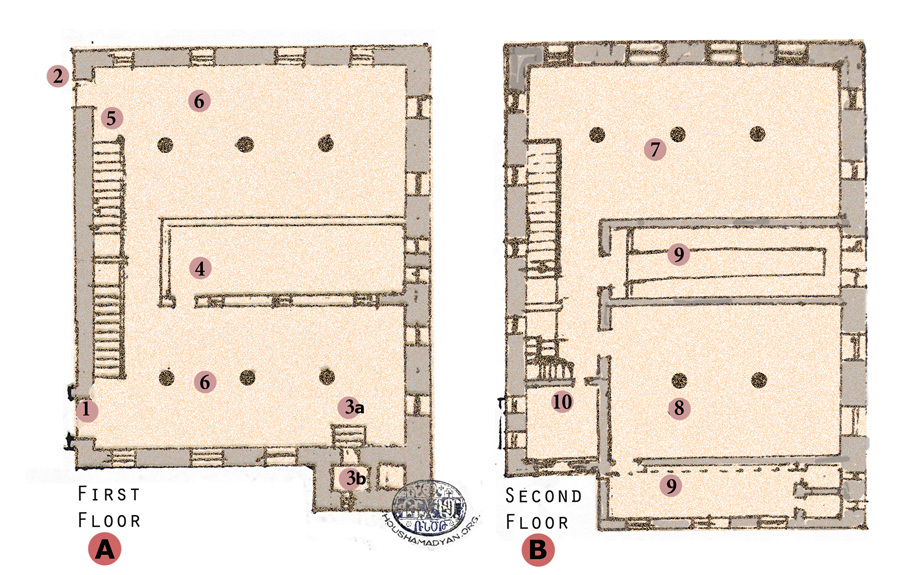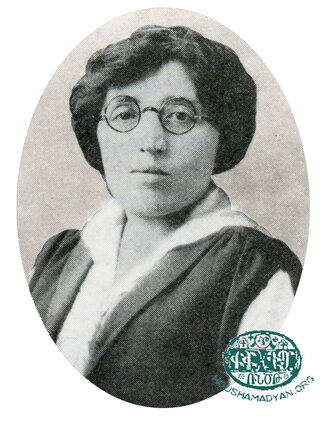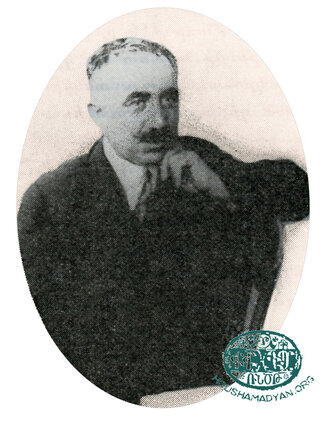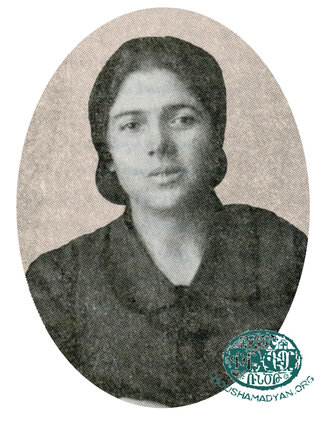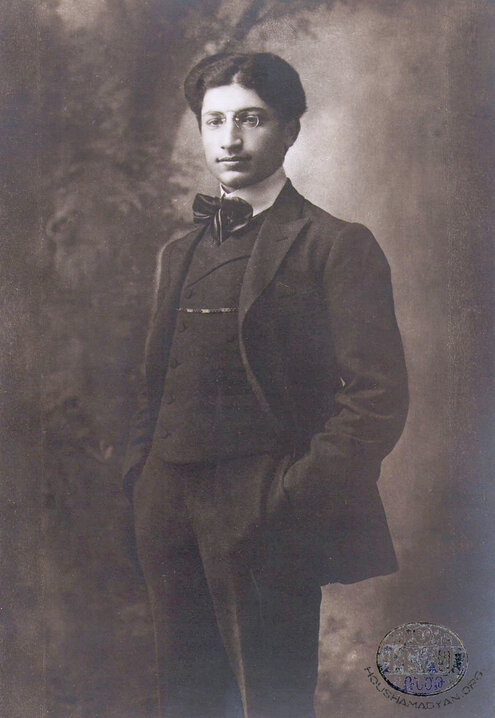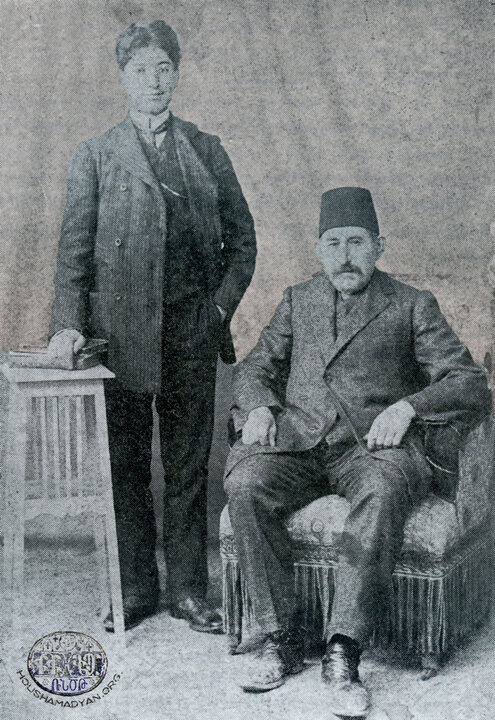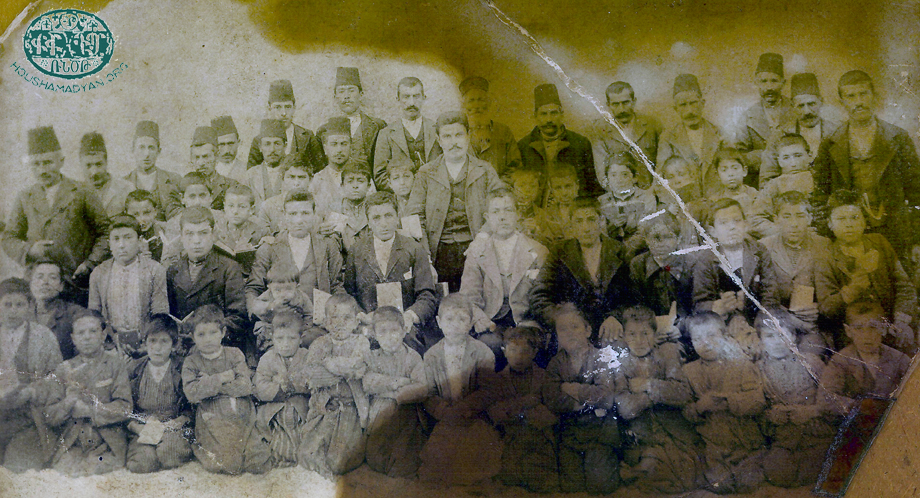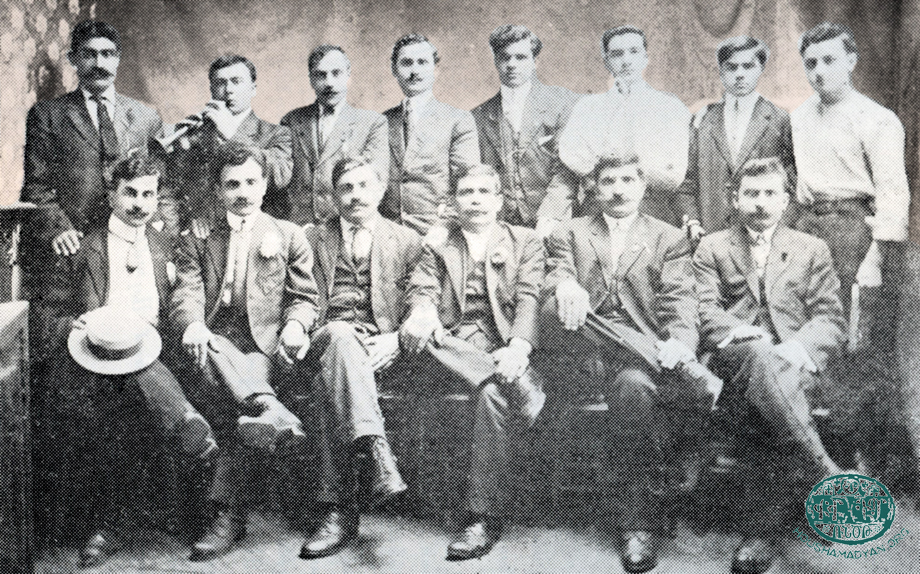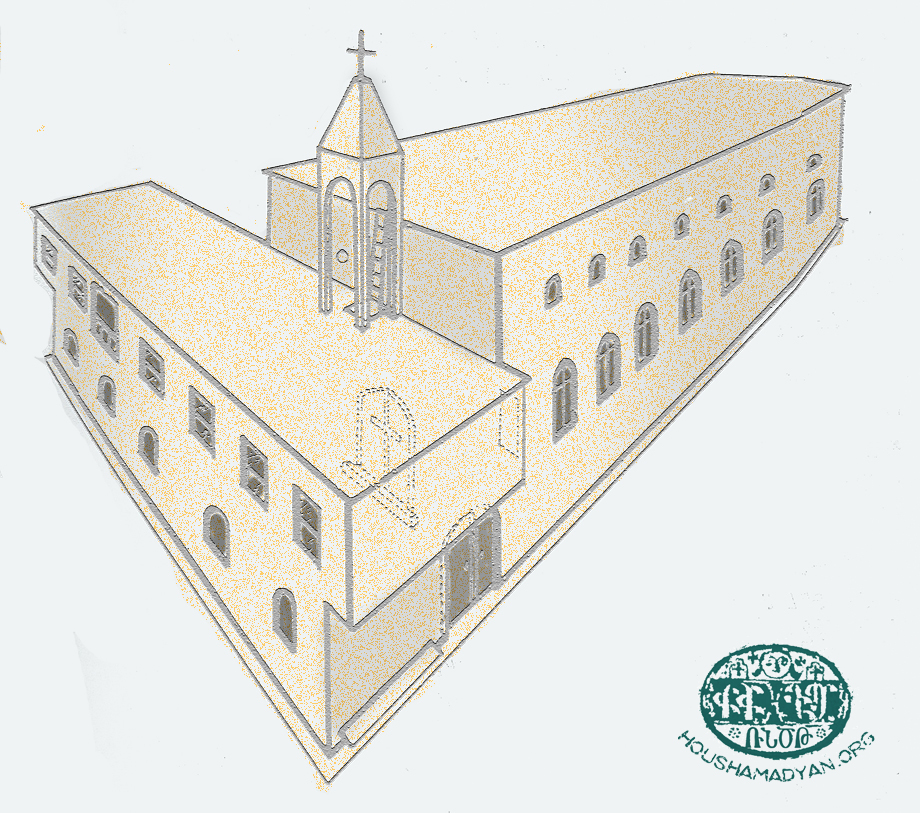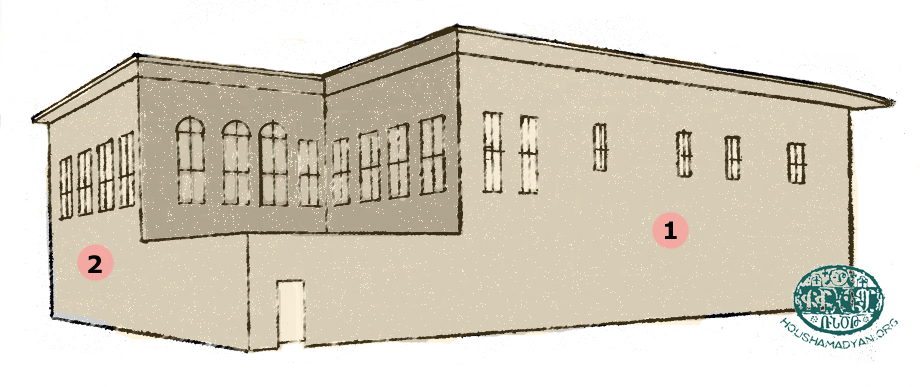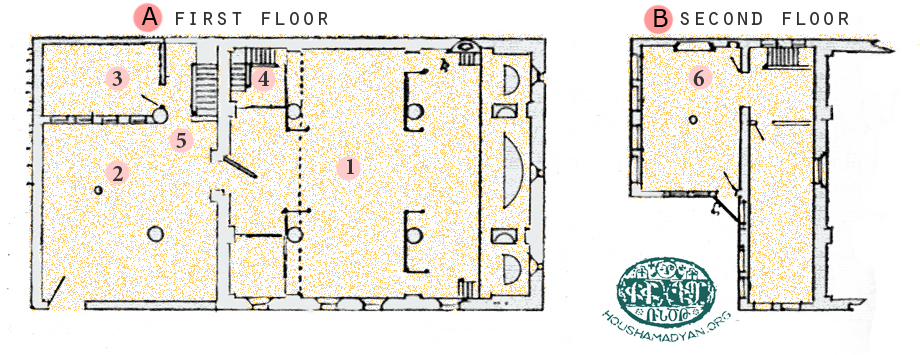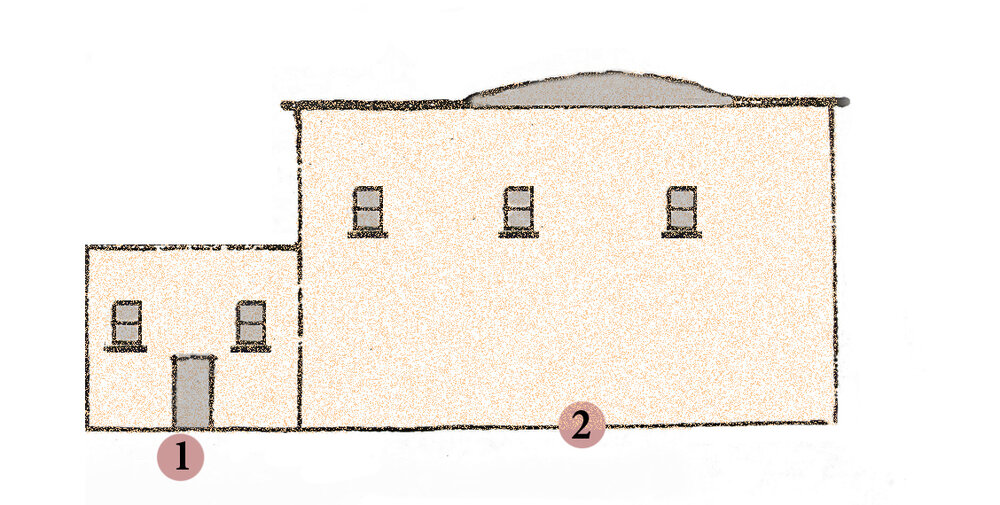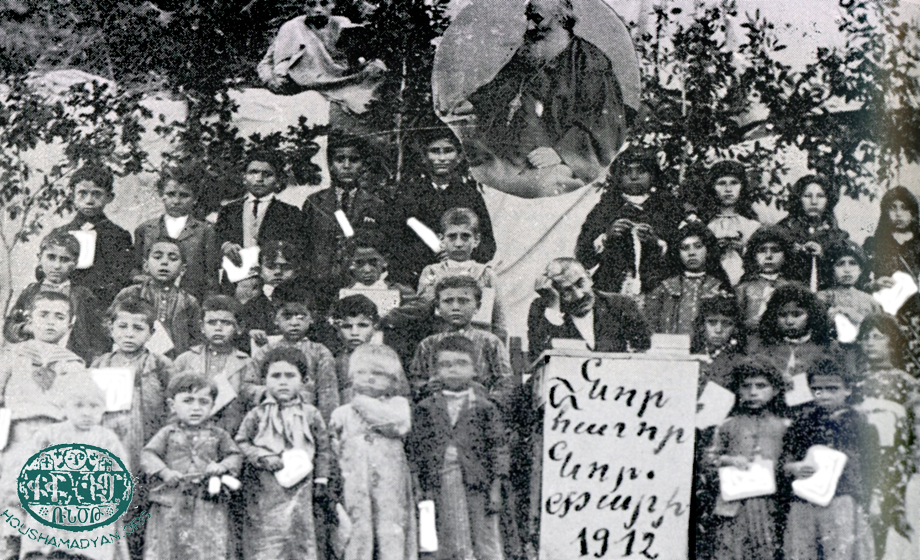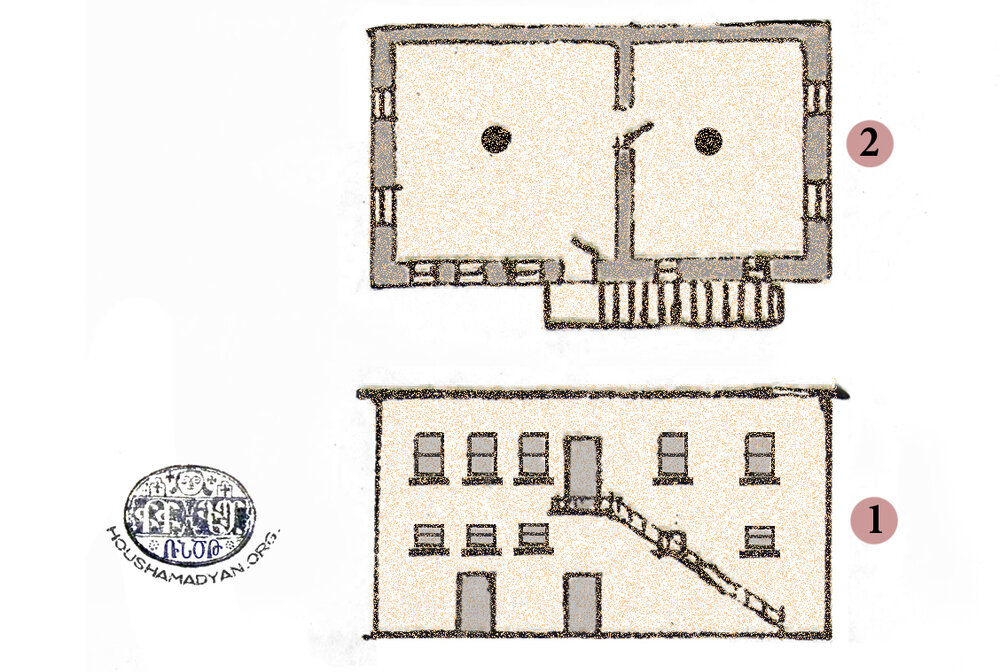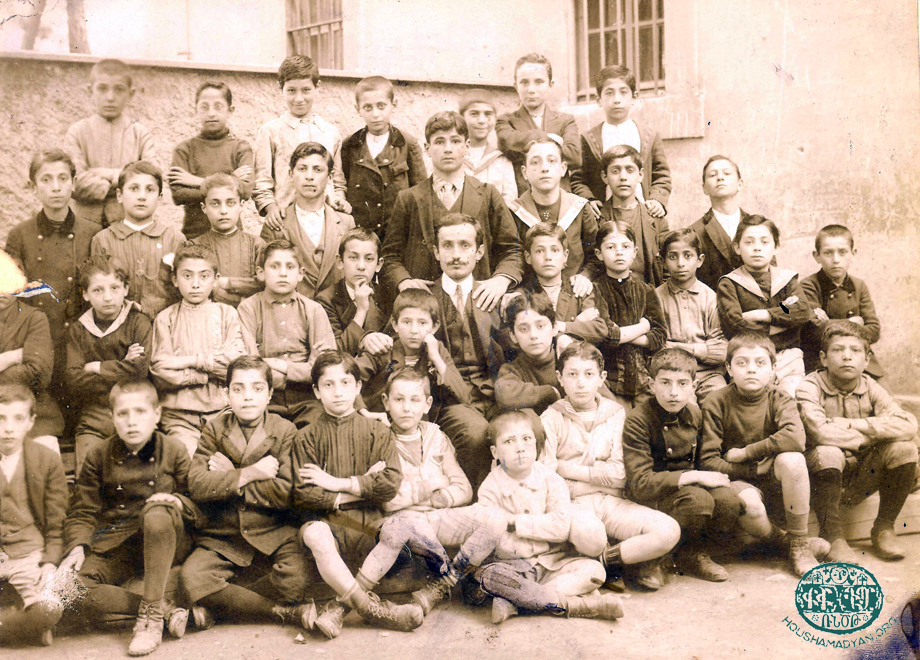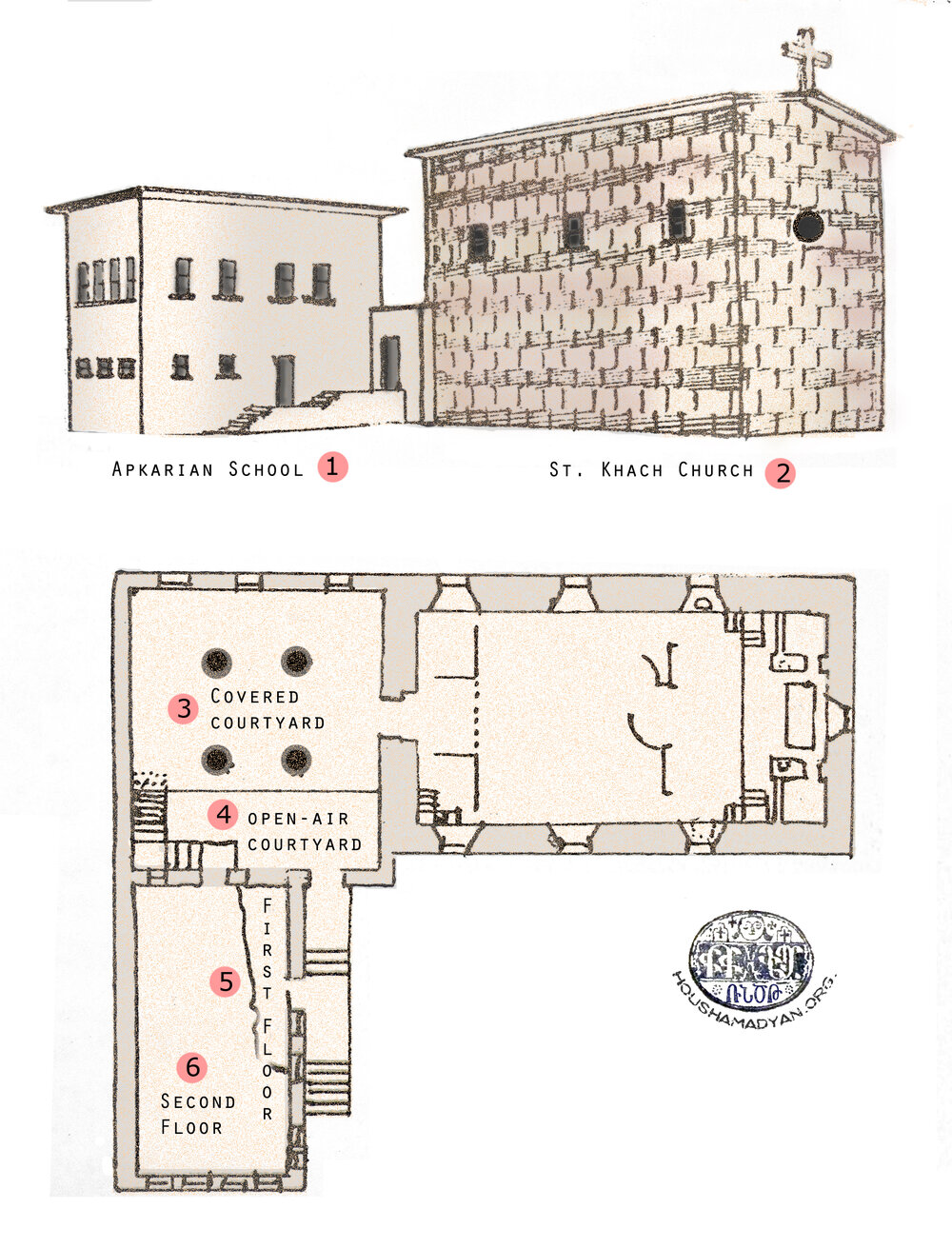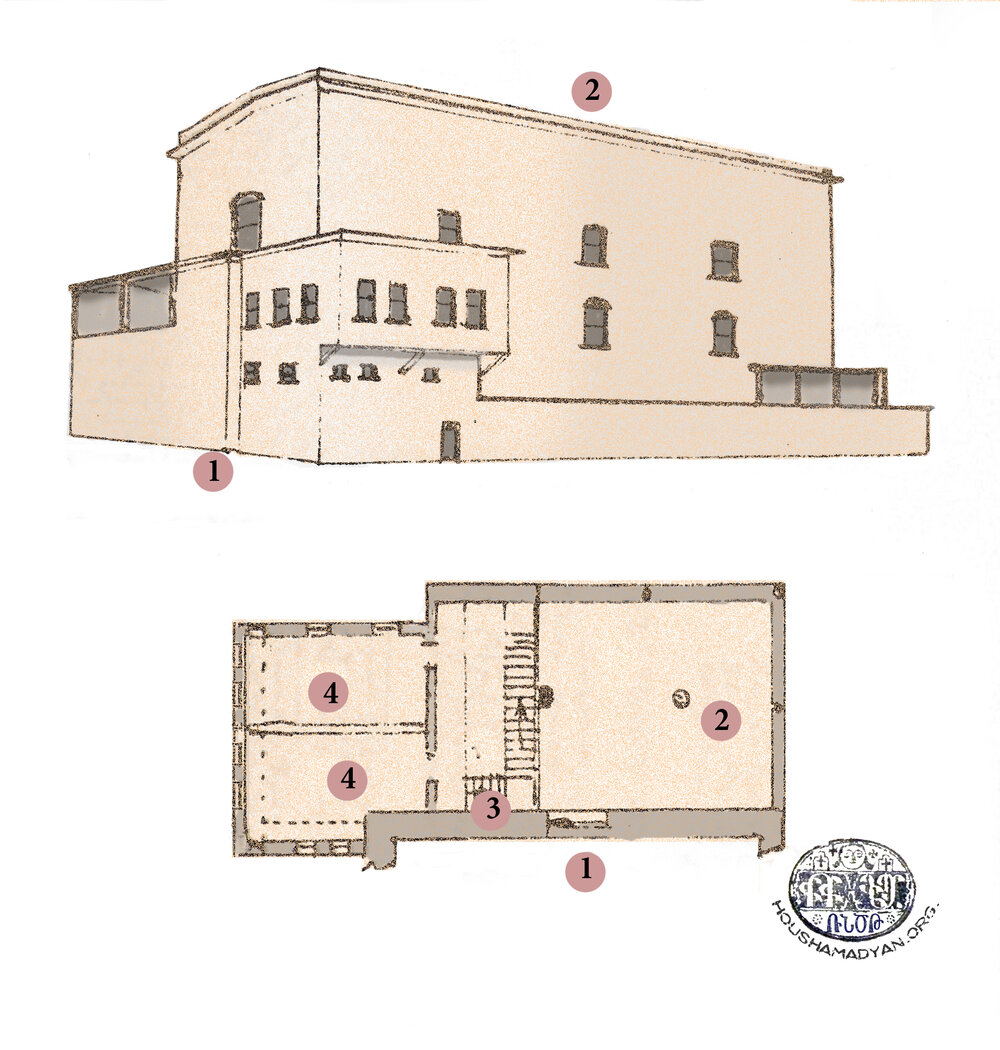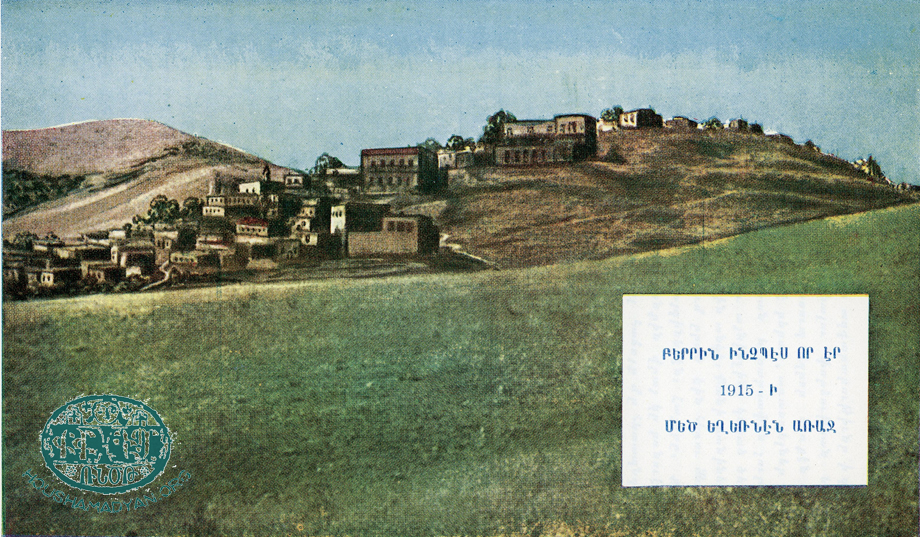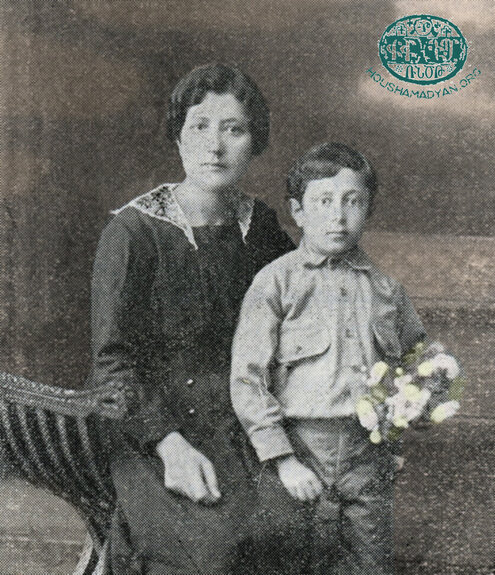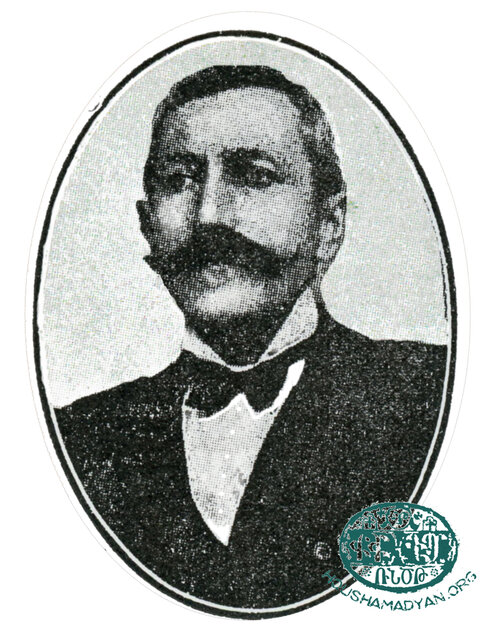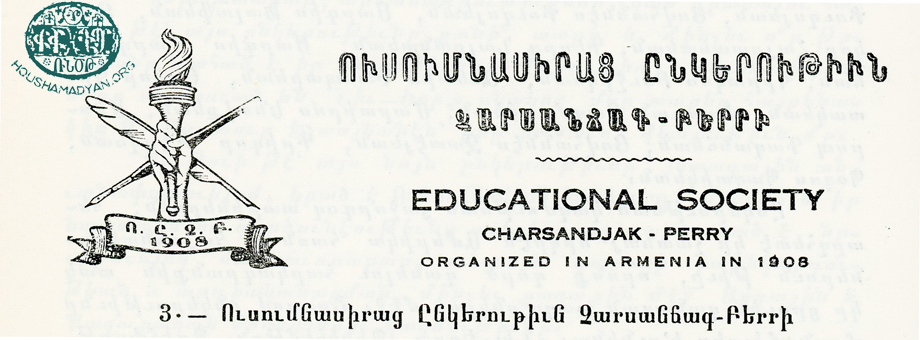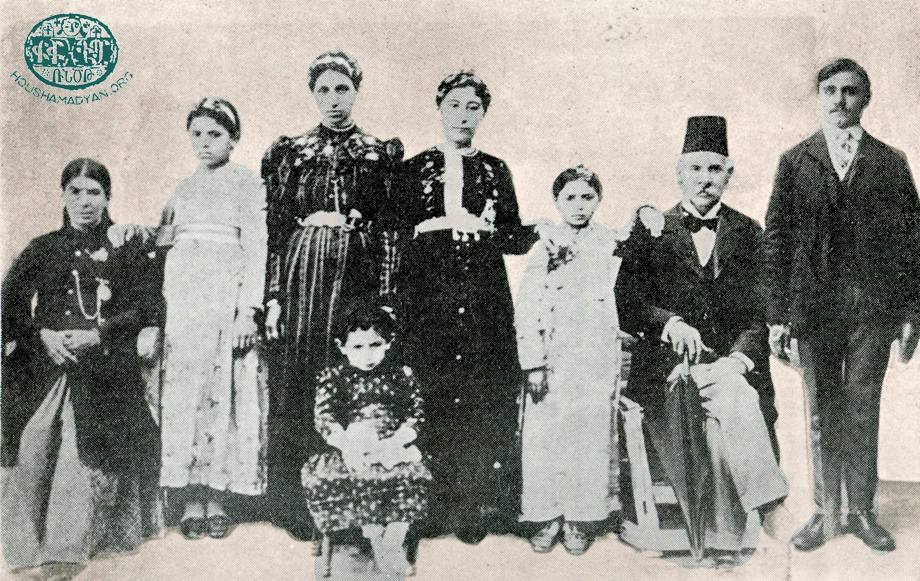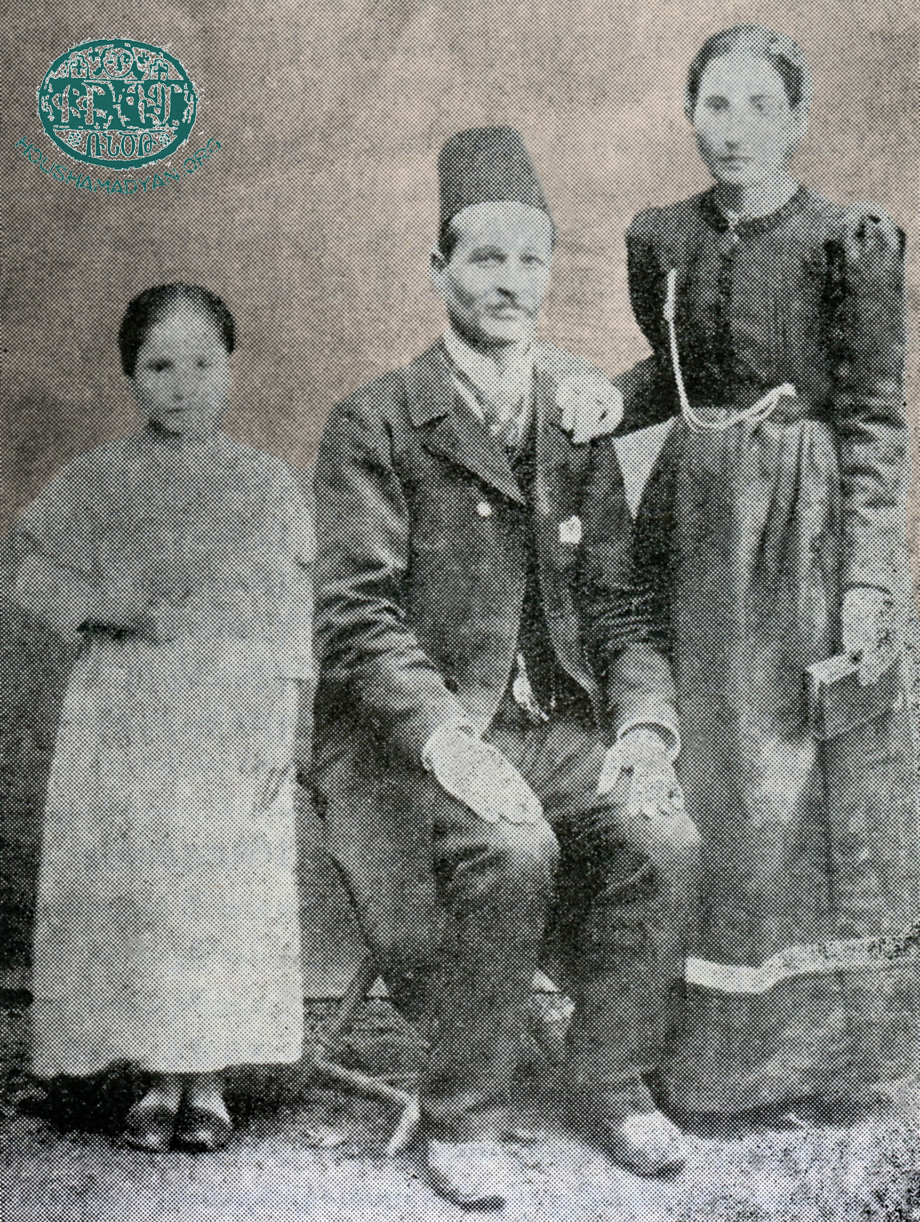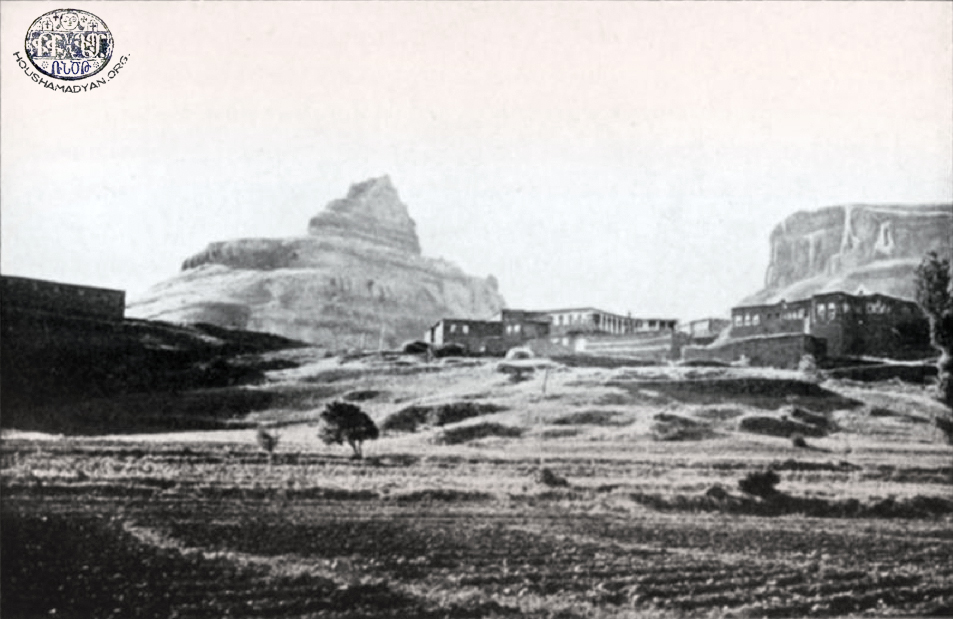Dersim - Schools
Author: Vahé Tachjian 02/12/2016 (Last modified 02/12/2016) - Translator: Simon Beugekian
To better understand the history of the last century of Ottoman Armenians and relations between the state and the Armenian community, it is necessary to study the Armenian schools that operated throughout the empire. These education institutions were placed where Armenian identity lived on and developed, and whose welfare the Armenian community, from the highest communal bodies down to the smallest rural councils, did its utmost to support. Thus, it is sufficient to examine the important periods of relative freedom within the history of the empire - the Tanzimat period, the early years of the reign of Sultan Abdülhamid II, and especially the few years following the 1908 restoration of the Ottoman Constitution - in order to clearly see the sizeable contributions made by various Armenian institutions, organizations and individuals in efforts to improve community schools, to develop educational life, and to spur on Armenian learning.
When the state regime adopted a policy of anti-Armenian paranoia and when persecutions became widespread, the Armenian school was regarded as a prime font of suspicion and the first target of anti-Armenian sentiment. As we shall see, during the reign of Abdülhamid II it was sufficient for the police to find an Armenian songbook in the belongings of a teacher during a search to imprison that person for years.
The Armenian school played a unique role in the Armenian communities of the Dersim region. In a few decades, especially after the restoration of constitutional government in 1908, Armenian educational centers quickly developed. In addition to urban centers (Chmshgadzak/Çemişgezek, Peri), many Armenian villages in the area had their own schools which, given their quality instruction and improved teaching methods, could occasionally rival urban schools. The close bond between Armenians and their schools occasionally comes to light through small pieces of information. For example, after the 1895 massacres, the Bedretil (present-day Harmanlar) village in the Chmshgadzak region was mostly emptied of its Armenian inhabitants. Only six houses remained, but the inhabitants stubbornly continued to maintain their village school. Another interesting tidbit is the launching of a scout movement in the Armenian school in the town of Chmshgadzak in 1914. Young Armenian scouts, just a year or two away from disappearing from the face of their homeland forever, hiked through its amazing natural countryside.
Educational societies, created by village natives living in exile communities (Istanbul, Aleppo, the United States, etc.) played a big role in the quick advancement of the Armenian school network back home. They attempted to financially assist these centers of learning whenever possible. Given the lack of state aid, this Armenian communal cooperation and the resulting dynamism served as productive and primary factors in the development of Armenian educational life, the preparation of qualified teachers, and the adoption of education for girls. This rich depiction of Dersim Armenian schools is ample proof of this active educational fervor.
Equally interesting is the existence of numerous original sources regarding Dersim Armenian schools. In the main, they are in the form of post-Genocide memory writings in which an important place was given to the town or village school. They include descriptions of the school building, the names of pupils and teachers, biographical notes and photos, information on educational societies, and school plays. All this is further evidence of the unique role played by these centers of education in the social and cultural life of Dersim Armenians.
Of particular note in this series of memory books is the unpublished work of Hovhannes Adjemian on Chmshgadzak, in which the author not only provides a wealth of information regarding numerous Armenian schools in the area, but also provides sketches of how they looked. Evidently, Adjemian was aware of the importance of the idea of using visual materials to restore a memory – the memory of a now vanished town or village and its daily life. Thus, in his unpublished work, Adjemian adopts this approach in an attempt to resurrect the lost churches and schools of his native Chmshgadzak.
Chmshgadzak (town)

Vartanian Coed School (Lower district; later called Mesrobian School)
This school was located in the courtyard of the St. Asdvadzadzin Church, in the town’s lower district. It was also known as the Kaghaki Tbrots (Town School). The two-story school, built in the 1850s from roughhewn stones, had two rooms per floor. The school and the church shared the same yard divided by a high wall. The upper floor of Vartanian School had large windows and the floor wasn’t wood. One of the upper rooms was used as the diocesan office; the other for the school. Later, when school enrollment increased, other classrooms were opened on the lower floor. [1] Only boys attended the school until 1865. That year, under the initiative of regional primate Archimandrite Arakel Mazlumian, the school accepted girls; a move which irritated local Armenian conservative circles. [2] According to 1870s data, the school operated a kindergarten and an elementary school. [3]
The number of Armenian pupils had multiplied by the start of the 1880s. During the tenure of Senior Archimandrite Partoghimeos Baghdjian (1881-1886), a project was launched to construct a new building for the Vartanian School. The following individuals, members of the district council, are noted as backers – Hagop Shahbazian, Babadjan Eknoian and Krikor Minasian. A sultanate permit for the construction is obtained and a two thousand square meter parcel of land belonging to Tsoyents Ali in the extreme eastern portion of the Kasar neighborhood is purchased. Work on the two-story structure commences and is most likely finished in 1883. The architect is Mikayel Iknadozian (Eknoian). It is also recounted that male and female pupils assisted in the construction by sifting soil and carrying water. Beginning in 1883, the Vartanian School falls under the sponsorship of the United Society (Miatsyal Engeroutyoun) founded in Constantinople in 1880. Mgrdich Sarian and Margos Natanian, educational examiners of the United Society, take turns serving as the institution’s director. [4]
Walled courtyards were located on the southern and northern sides of the new school. The first was allocated for the boys, and the other became a playground for the girls at the end of the 1890s. The lower floor of the building was mostly used as a winter recreation area. It had two huge doors that opened onto the yards and the floor was fashioned of polished stones. Opposing rooms were located on the eastern and western sides of the lower floor. They were used for wood storage and a sewing workshop for girls. The school janitor stayed in another. Going through these rooms there were two stone staircases, opposite each other, that led to the second floor with a large reading hall and four classrooms. The rooms on this floor were well lit due to the high windows. The floor and ceiling were made of wood. The school’s roof was earthen. On the eastern side of the school there was a 1,500 square meter garden with various fruit trees. [5]
Even though the activities of the United Society only lasted for three years in Chmshgadzak, they proved to be quite impactful. Those three years saw basic improvements made to the school, including the instructional and teaching methods employed until then. In prior years, the main subjects taught were the Psalms and the Bible. In light of the changes, new subjects were introduced – Armenian language and history, history of the saints, geography, arithmetic, algebra, general knowledge, morality, physical education, singing (both religious and Armenian patriotic), painting, handwriting, Turkish and French. While in the past pupils would sit on pillows (mindar) brought from home, classrooms were furnished under the sponsorship of the United Society. Physical punishment was also outlawed in the school during this period. An event is recounted when a teacher was dismissed for slapping a pupil. [6]
The Vartanian School also had its own theater group directed by Bedros Atamian, a teacher born in Chmshgadzak. He was educated in Constantinople in the 1870s and served as principal of the Smbadian School in Harput/Kharpert and later as a principal in Diyarbakir/Dikranagerd. He wrote historical plays such as Hayg and Pel,Bab Takavor and Vartanants Baderazm. At first, the theater troupe was only comprised of male pupils but later included females. [7] Atamian was also a vocal teacher. During his day, Chmshgadzak pupils learnt Azadn Asdvadz, Mer Hayrenik, Teh Hayreniats, Herik Vortiag, Himi El Lrenk, Togh Pcheh Kamin, Ov Medzaskanch Tou Lezou, and other patriotic songs. Each pupil had his/her own handwritten songbook. Each Sunday they would assemble for vocal lessons by Atamian. During his tenure, girls were also singing in the church choir. They were veiled and stood on the left side of the church, apart from the boys’ choir. [8]
Simon Felegian and Ghazaros Peshdimaldjian - who were born in Chmshgadzak and later studied in Constantinople - taught at the Vartanian School in the 1850s and 1860s. Another teacher was ‘Schoolmaster’ Minas (surname unknown). Major changes to the teaching staff occurred when the United Society took over its administration. Khachadour Melkonian, Mikayel Haladjian (from the Agn village of Gamrgab), Mardiros Sokhoyian (Kghi/Kiğı), and Tovmas Zavzavatdjian (Diyarbekir) taught at the school during this period. [9]
Graduates of the school during the administration of the United Society included Garabed Toukhmanian, Yeghia Kleian, Garabed Fadouliadjian, Mangasar Dzaghigian (1893-1962), Hampartsoum Melikian, Sarkis Harazadian, Senekerim Indjeian (killed in 1915), Margos Der Manuelian, Ghazar Boyadjian, Tateos Tatian, Haroutiun Gopoyian, Yervant Iknadosian (I.A. Yerab), Krikor Yazoudjian, Arshag Baronian, Haroutiun Kehayian, Kapriel Goutsouzian, Melkon Goutsouzian, Garabed Yeranosian, Hovhannes Der Kasbarian, Aghadjan Nalbandian (killed in 1915), and others. [10]
After the exit of the United Society, from around 1886-1887 onwards, the school was again fell under local sponsorship. Bedros Atamian is appointed principal and Yeghia Arsenian, his assistant. In 1887, Atamian is arrested by the local authorities when a search of his house reveals a patriotic Armenian songbook and Ghevont Alishan’s Sisvan book. This was sufficient for Atamian to be sent to the Erzurum/Garin jail to serve out a 15 year sentence. In 1893, Atamian is granted a royal pardon. On the road back to Chmshgadzak, he is killed at Bayburt/Papert. Immediately after Atamian’s arrest, the school administration removes all ‘suspicious’ books from its library and various decorations used for staging plays. Atamian is replaced as director by Chmshgadzak native Arakel Giragosian who barely serves at the post for a year. He is followed by Sahag Donabedian (from the Chmshgadzak neighborhood of Kasar) and then Davit Kiurkdjian (Garmri village). In 1889-1890, Merger Toukhmanian (a graduate of the school from the Kasar neighborhood) is called to serve as director. He is followed by Arshag Boranian (or Boronian). During the tenure of Senior Archimandrite Tatoul Tourian as primate (1871-1914) the two rooms on the school’s upper floor are used as the diocesan office. Vahan Ouzounian serves as school director from 1903-1906. [11]
Some of the teachers at the school from 1886 to 1908 were Hovhannes Kasbarian, Margos Manuelian, Senekerim Indjeian, Arshag Boranian, Nigoghos Akkashian, Mardiros Papazian (born 1884, killed 1915), Kerovpe Ezgiulian, Merger Kyurkdjian, Minas Minasian, Hovhannes Souldourian and Ardashes Manuelian. These individuals were mostly Vartanian School graduates. [12]
Constitutional order was restored to the Ottoman Empire as a result of the July 1908 coup. Naturally, this event unleashed a storm of enthusiasm for Armenians, and its waves even reached Dersim. Chmshgadzak Armenians also welcomed this historic event with demonstrations. On the eve of July 11, celebrations took place in the Vartanian School. Flags, illuminated by lanterns, were hung from the balcony columns. The multitudes gathered in the large hall lit by torches. Old and new pupils, teachers, local luminaries and a few Turkish officials mingled. Balls of oil ashes were placed along the perimeter of the roof of the school and were lit in unison when a signal was sounded. The crowds cried out Yaşasın hürriyet (long live freedom). Hampartsoum Kasbarian, who was a pupil at the Vartanian School at the time and later wrote a memory book on Chmshgadzak, was present at this celebration. Young Hampartsoum, escorted by his parents, first heard Mikayel Nalbandian’s poem Azadutiun, arranged as a song, performed at this event, as well as Ghevont Alishan’s Pamp Vorodan. Clearly, such songs hadn’t been publicly sung in the town since the arrest of the vocal teacher Bedros Atamian in 1887. After the declaration of the constitution, the first development of note in the school was the addition of Armenian history to the curriculum. We assume that this class was abolished during the reign of Sultan Abdülhamid II. In addition, French, natural sciences, general knowledge, Armenian language and literature, classical Armenian, botany, Turkish literature, English, Ottoman history, world history, geography, religion and vocal training became subjects of instruction. [13]
Graduates of the 1910 class included Krikor Dzaghigian, Setrag Harazadian, Mihran Ghoushigian and Mardiros Indjeian. That same year Bedros Mazloumian (from the Arapgir village of Anchrti) was appointed school director. [14]
It was during this period that boys and girls were taught in the same classroom; albeit sitting separately. [15]
In 1912-1913, supervision of the Vartanian School (as well as the Nersesian School in Chmshgadzak’s Iuchbek neighborhood) was again assumed by the United Society; now reorganized. Karekin Pashalian (from Agn) became the new director. The next year, however, a dispute arose within the neighborhood council, resulting in the Armenian Revolutionary Federation (ARF) members leaving the council and establishing a new school by renting a room in the Akrag neighborhood of Chmshgadzak. Tavit Atamian (from Kghi) is appointed director of the new school and Manoug Hatsakordzian (Malatya) his assistant. Thus, the Lower District now had two Armenian schools. This situation didn’t last long. A few months later, those who split off reunited with the central school. In 1912-1913, the Vartanian School began to be called the Mesrobian School (in honor of Mesrob Mashtots who founded the Armenian alphabet). Most likely, the name change was inspired by the 1,500th anniversary of the alphabet. [16]
From 1908 until 1915, those teaching at the Vartanian (Mesrobian) School included Arshag Boranian, Hampartsoum Hekimian, Hampartsoum Amirkhanian (from Hazari village), Boghos Zenneian (Yeretsakrag village), Ghazaros Kyoumdjian (Yeretsakrag), Mardiros Papazian, Haygouhie Minasian, Tavit Atamian, Miss Takouhie (surname unknown), Srpouhie Mengiushian, Mariam Changents (Agn), Satenig Kasbarian, Adovm Atamian (Hazari) and Reverend Roupen Hekimian (born 1865, killed 1915). [17]
Orphanage School
In 1903, a boarding school section for orphans was founded next to the Vartanian (Mesrobian) School. Orphans attended classes along with regular pupils. They would sleep in a separate apartment opened in the school. Some would sleep in rented homes. The orphanage operated until 1906. [18]
Nersesian School (Iuchbek/Üçbek neighborhood)
Iuchbek/Üçbek (Ouchpag) was a completely Armenian populated neighborhood adjacent to the town of Chmshgadzak. The two story structure here was former apartment of a local well to do family that left Chmshgadzak and bequeathed the apartment for the purpose of establishing a school. The school was launched in the 1860s. There were two rooms on the upper floor. The larger one was for the boys, and the smaller, for the girls. The surface of the upper floor was wood. The lower floor was used as a recreation area. There were two rooms on the western side of this floor. One was used to store firewood and the neighborhood shepherds lived in the other until 1912. Toilets were located on the eastern side of this floor. The recreation area was always dirt surfaced. [19]
In the early 1880s, during the tenure of Senior Archimandrite Partoghimeos Baghjian as primate, the building was renovated. The ceiling of the upper floor was elevated and the classrooms furnished. It is assumed that the girls’ section at Nersesian was established in 1901 with financial assistance from Armenians from the Iuchbek neighborhood who had immigrated to the United States. In 1903, a huge arched door was installed on the lower floor. Just above, on the second floor, an antechamber was carved out for the girls’ classroom and a teachers’ room built. [20]
Around 1912-1913, the Nersesian School also falls under the supervision of the reorganized United Society. Boghos Zenneian (born 1886, killed 1915) and Ghazaros Kouyoumdjian (killed 1915), former Vartanian School teachers, and Mardiros Papazian begin to teach there. Zenneian was a graduate of the Mkhitarist Brotherhood School in Constantinople and the silkworm professional school in Bursa. Kouyoumdjian graduated from the Garin/Erzurum Sanasarian Academy. [21]
Nersesian School (Chmshgadzak)
First floor: (1) Main door; (2) Door; (3a) Boys’ toilet; (3b) Janitors’ room; (4) Stairway; (5) Stairway; (6, 6) Boys’ courtyard
Second floor: (7) Boys’ classroom; (8) Girls’ classroom; (9, 9) Classrooms; (10) Teachers’ room
(Source: Hovhannes Adjemian, "Chmshgadzak Topographer and What Was Said About Him" [in Armenian] in Distinct Topography of Chmshgadzak Province [in Armenian] (unpublished), 1954, Boston) - The plan was reworked by Houshamadyan
In the fall of 1908, the school’s theatrical group was launched. During the next year, the pupils performed Bedros Tourian’s Sev Hogher followed by Avedis Aharonian’s Artsounki Hovid the next semester. In 1913, the group staged Vartanants Baderazm in the church. That same year, the girls’ group performed Hama and Ester, directed by Akabi Tatian, based on the Bible. Tbrotsen Pakhchogh Dghan, probably written by the teachers, was also performed. This Armenian school in the Iuchbeg neighborhood becomes a center of enlightenment – it had quality teachers and new methods of teaching. Prior to its destruction (1914-1915), a scout troupe was also started at the school made up of the top pupils. This was the first scout troupe in the entire region of Harput. It was established by school director Ghazaros Kouyoumdjian. The troupe went on many excursions; some to the banks of the Euphrates and others to the foothills on the Dersim Mountains. The scouts had their own uniforms. Besides going on excursions they performed physical exercises, engaged in various sports, and participated in scouting classes. [22]
The following are the names of teachers we know about at the Nersesian School: Margar Djelalian, Mesrob Dzerigian, Tavit Eksizian, Merger Toukhmanian, Sahag Nalbandian, Hovhannes Ashodian, Mardiros Pakradian, Vahan Der Boghosian, Mardiros Papazian, Tavit Aramian, Aleksan Malehemezian, Boghos Zenneian, Ghazaros Kouyoumdjian, Apraham Hekimian, Merger Melkonian, Mardiros Pehlivanian, Yeghia Arsenian, Margos Der Manuelian, Manuel Der Manuelian, Setrag Boyadjian, Hampartsoum Haroutiunian, Ghazar Boyadjian, Sdepan Djelalian, Tateos Tatian, Ardashes Der Manuelian, Hovsep Bardizbanian (from the town of Garmoudj near Ourfa), Senekerim Indjehian. Teachers at the girls’ section included Akabi Tatian, Lousig Srabian, Miss Takouhie (surname unknown), Mariam Tertsagian, Anna Bardizbanian and Aghavni Ashodian. [23]
1) Boghos Zenneian (born 1886, killed 1915) (Source: Hovhannes Adjemian, "Chmshgadzak Topographer and What Was Said About Him" [in Armenian] in Distinct Topography of Chmshgadzak Province [in Armenian] (unpublished), 1954, Boston)
2) Boghos Zenneian (left) and his uncle Garabed Zenneian (seated) (Source: Vazken A. Andreassian, Hazariabadoum [in Armenian], Vol 1, Beirut, G. Donigian Printers, 1985)
Protestant School (Chmshgadzak, Iuchbeg neighborhood)
The school was established in 1891 by Senekerim Injehian, who also served as its first teacher. Initially the school met in a room at the Injehian house. The school and its twenty coed pupils moved to the Protestant assembly hall after being built in 1895 in the Iuchbeg neighborhood. Enrollment gradually increased to forty. [24]
In addition to Senekerim Injehian, the school’s founder, Pastor Beshgeotiurian (from Harput), Pastor Garabed Giulian (Sarikamish), Pastor Sahag Hovsepian (Chmshgadzak), Hovhannes Ashodian (Garmri village), Mesrob Jamgochian and Akabi Tatian all taught at the school. [25]
Turkish Schools in the Town of Chmshgadzak
There were three Turkish schools in the town – one was a religious school and the others state schools. The largest and most important was the two story school located at the upper square of the market. After 1908 it was turned into an elementary school that went up to the 6th grade (Rushdiye/Ruşdiye). The second school was located in the courtyard of the Hadji Djami mosque in the Medjid Mayleh neighborhood. It had 3-4 rooms and classes went till the second grade only. The third was the religious school (medrese). None of these schools enrolled girls. [26]
Villages of Chmshgadzak Kaza (Sub-District)

Hazari (present-day Anıl)
The two-story Mesrobian School here, built in the 1850s, was coed. It was located adjacent to the Sp. Yerrortoutiun (Holy Trinity) Church. The lower floor was completely made of stone and served as a courtyard for the school and church. The upper floor, fashioned from wood, had two rooms. Enrollment was around seventy, of which 15-18 were girls. Classrooms were coed but boys and girls sat apart. [27]
School enrollment increased in the following years and work is begun on a separate classroom, completed in 1907, for girls in the school. Most of the construction and overall school expenses are covered by educational societies created by former Hazari villagers now living abroad – Constantinople (est. 1894) and the United States (est. 1903). Sponsorship of the Hazari School is assumed by the United Society of Constantinople in 1913. [28]
Vasken Andreassian attended the Hazari School after the 1908 Ottoman Constitution. In his memoirs he makes observations regarding changes to the teaching methods employed at the school. This was a period when new study subjects were being introduced, when pupils began to learn Armenian patriotic and revolutionary songs and take physical education classes. Year-end oral exams took place in public and were attended by prominent teachers from nearby towns, as well as native Armenian villagers who had returned from the U.S., who were often members in the educational society tasked with doing good work for the village school. [29]
We know that the following subjects were taught at the school – history of religion, Armenian language and literature, reading, arithmetic, English, general history, Turkish and general knowledge. Girls were also taught sewing, especially lacework. We know the names of the following teachers: Mardiros (surname unknown, from Mamsa village), Hampartsoum Amirkhanian, Hovhannes Der Kasbarian, Satenig Der Kasbarian, Anna (surname unknown, from Agn), Antranig Vosgerichian (Kghi). [30]
Vazken Andreassian, in his memoirs, also recounts how pupils at the school were punished. He remembers one method where the pupil to be punished is forced to squat on his knees on a floor that has been covered by broken bits of rock and pebbles by the teacher. The pupil must hold aloft a large church tome (Haysmavourk) that can weigh from 20-25 kilos. [31]
Mamsa (present-day Alakuş)
This village had two schools – the Nersesian School and the hay horom School (belonging to the local community of Armenian speakers who followed the Greek Orthodox Church). Both schools were built adjacent to the community churches – St. Toros (for the hay horoms) and St Kevork (for the Armenian Apostolic community). [32]
The Nersesian School dates back to the 1830s. Societies to financially assist the school were opened in Aleppo (1875), Constantinople (1883) and in the United States by former Mamsa villagers. At first, it was a one-story school but another floor was added later which had a high ceiling, large windows and two equally sized rooms. The lower floor consisted of a courtyard and an adjacent room. The school became coed in the 1870s. The Constantinople United Society ran the school for a period during the 1880s. At this time, Bedros Atamian, an art teacher from the Vartanian School, arrives in Mamsa and establishes a theatrical group comprised of upper level Nersesian School pupils and village youth. The group stages performances of Bab Takavor and Vartanants Baderazm in the church. Starting in 1893, Hamidian restrictions increase and such theatrical shows and the teaching of patriotic songs in the school cease altogether. [33]
Twenty boys and girls attend the school. Sdepan Vehabedian is one of the teachers. [34]
The hay horom School was a one-story structure of three classrooms. Only boys attended. Textbooks were in Greek lettered Turkish. Armenian was also taught. [35]
St Kevork Church (1) and the Nersesian school (2) of Mamsa.
First floor: (1) Church; (2) Courtyard; (3) Church’s mezzanine; (4) Stairway; (5) Stairway.
Second floor: (6) Three classrooms.
(Source: Hampartsoum Kasbarian, Chmshgadzak and its Villages [in Armenian], Baikar Printers, 1969) - The plan was reworked by Houshamadyan
Sisna (present-day Varlıkonak)
The school was built in 1860 next to the St. Hovhannes Church. The school is rebuilt in 1900 and becomes a two-story structure. According to Archimandrite Karekin Srvantsdyants, 25 pupils attended the classes in 1879. Educational societies to financially assist the school are established in Constantinople (1875) and the United States (1910). [36]
Garmri (present-day Gedikler)
The school of Garmri and St. Asdvadzadzin Church: (1) Church; (2) Courtyard; (3) School's first floor; (4) School's second floor
(Source: Hovhannes Adjemian, "Garmri" in Distinct Topography of Chmshgadzak Province (unpublished), 1952, Boston) - The plan was reworked by Houshamadyan
The school (Yepradian) was coed and was built adjacent to the St. Asdvadzadzin Church. At first, it was just had the one story, but a second, consisting of a large room with high and wide windows, was added in 1880. In the second half of the 19th century the Yepradian Society was established in Constantinople to financially assist the school. It operated for a while and then closed. In 1909, former Garmri natives who had immigrated to the United States formed an educational society to financially assist the school. The society had a branch in Aleppo.
One of the teachers was Tavit Kyurkdjian (also known by the surname Mlehian) from Garmri and a graduate of the Getronagan School in Constantinople. He was famous as a musician and a transcriber of oral songs. Other teachers we know of were Nigoghos Ashodian, Manoug Norzigian (from Garmri and a Yeprad College grad killed in 1915), Haroutiun Ayrasian, Dikran Mardirian, Mikayel Topdjian, Arakel Eylerian (Kachperouni) and Markar the Schoolmaster.
The village also had a one-story Turkish school (religious) assumed to have been built in 1890. [37]
Mournayi/Mirnav
The school was located close to the St. Asdvadzadzin Church in the south-western part of the village. Built in 1892 of roughhewn stones, a second floor was added in 1894. At first it was called the Apkarian Coed School, but after 1911 it was called Torkomian. The upper floor had a high ceiling and two rooms with large windows. The floor was wood. Wooden stairs on the building’s exterior led to the upper floor. Immediately after the upper floor was built, it was requisitioned by Ottoman police and served as a police station. They took over the stable as well for their horses. These officials had been posted in Mournayi ostensibly to safeguard the community, but Armenian original sources express doubts as to their defensive role. When the police were absent, the lower floor was used as a resting place for those visiting the village. This situation lasted until restoration of the constitution in 1908. The police leave and the upper floor is again used for its original purpose – classroom instruction. During the 1895 massacres of Armenians, the village church, school and Armenian houses were set ablaze. By 1898, the school had been rebuilt and classes resumed. [38]
Compatriotic societies, also designed to financially assist the school, were established in Constantinople (1891), the United States (1908), and Aleppo (1910). In 1911, fifty pupils were enrolled in the school that went until the 5th grade. As of 1912, the school was supervised by the Constantinople United Society. We know the names of the following teachers: Hovhannes Der Kasbarian (Chmshgadzak), Adovm Atamian (Hazari) and Shavarsh Altibarmakian (Sisa). [39]
Yeretsakrag (Yeritsakrag)
The Apkarian School in this village was located on the southern side of the St. Khach Church’s large courtyard. It was a two-story stone structure with wood floors and well-lit rooms due to large windows. The first floor was mostly used as storage space for the school and church. At times, it was also used to house government police summoned to “protect” the village. [40]
The school went coed in the 1890s. The teacher would receive 15-20 kilos of wheat yearly from the parents of his pupils in lieu of wages. The teacher would also pocket up to ten Ottoman gold pieces every year from four societies especially established for this aim. One such society was composed of village youth and the other three, comprised of former village residents, were located in the United States. We know that Vahan Hovnanian taught at the school and so did Father Arisdages Kaprielian (1902-1907). [41]
Morshkha (Morshkhan)
The school was built in 1880 thanks to the financial assistance of the Roupenian Society founded in Aleppo by former Morshkha residents. The two-story school, fashioned from simple black stone, was located alongside the St. Asdvadzadzin Church. The upper floor was for class instruction and the lower floor served as school storage space. Coed instruction was introduced in 1890. In 1910, an educational society designed to financially assist the Morshkha School was set up in the United States. Parsegh Srmakeshian, Hovhannes Der Kasbarian, Dikran Parounagian and Yeremia Papazian (killed 1915) taught at the school. [42]
Pazapon (present-day Cebe)
The school was probably built in 1889 with financial help from the Bartevagan Society established in Aleppo by Armenian immigrants. The school was located on the eastern fringe of the village on an elevated spot adjacent to the St. Asdvadzadzin Church. Initially it was a one-story structure. The church was set ablaze during the 1895 massacres of Armenians and rebuilt with two floors in 1898. Classes went up to the third grade. A Pazapon compatriotic union, which financially assisted the school, was established in Worcester (Massachusetts, U.S) in 1914. We know that Simon Dzerigian and Melikset Dzerigian taught at the school. [43]
Kharasar (Gharasar)
The school was built in the courtyard of the St. Toros Church. It was a two-story structure. The top floor was wood. Coed instruction probably was the norm by the 1890s. Classes went to the fourth grade. In 1903, a Kharasar village educational society was established in the United States to financially assist the school. We know that Mardiros Tatevosian (from the Agn village of Dzagk) taught at the school. [44]
Touma Mezre
Initially, the school consisted of a room located next to the village’s St. Kevork Church. The church was renovated in 1900 and a single room was separated from it, becoming the village’s new school. Former villagers who had immigrated to the United States established an education society and began to pay the school’s expenses. We know that Bedros the Schoolmaster (surname unknown) was one of the teachers. Village Turks had their religious school that only taught children. [45]
Bardizag (Baghchadjough)
The school was built in 1902 near the St. Kevork Church. It was a one-story structure until 1912. That year, due to financial assistance from the Baghchadjough Educational Society (formed in 1911), a two story school was built that is called the Kevorkian Coed School. Plans were for the school to have a library and halls but the outbreak of war in 1914 and the extermination of Armenians that followed prevented such plans from being realized. Individuals who taught at the school included Asadour the Schoolmaster (from the Arapgir village of Mashgerd), Partoghimeos Karoghlanian, and Mihran Kiupelian (Chmshgadzak). The latter formed a student theatrical group which performed Bedros Tourian’s Sev Hogher in the church. [46]
Brekhi (present-day Vişneli)
The school building was constructed in 1908. It was one-story and was located alongside the St. Kevork Church. An educational society, of which we know nothing more, was formed in Constantinople to assist the school. [47]
Bedretil/Beyretil (present-day Harmanlar)
The one-story school was built in the 1870s adjacent to the St. Asdvadzadzin Church (it’s assumed that the church was previously called St. Hagop). After the 1895 Armenian massacres, the village’s Armenian population sharply decreased, but the six Armenian households that remained kept the school operating until 1915. The teachers were Haroutiun Matigian (from Mamsa village), Yeghiazar Zakarian and Haroutiun Kehiayian. [48]
Miadoun (present-day Gemici - hamlet)
The school was built in 1868 on the eastern portion of the St. Asdvadzadzin Church’s courtyard. Both were located on an elevated spot. In 1892, a second story, with two rooms and high windows, was added to the school. Instruction was coed. The teachers: Der Boghos, Der Bedros, Der Nshan, Sarkis Tertsagian, Khachadour Tertsagian, Haroutiun Markarian and Sarkis Pakradouni. [49]
The School of Miadoun (1) and the St. Asdvadzadzin Church (2)
The plan of the school: (1) First floor; (2) Covered courtyard; (3) Stairway; (4, 4) Second floor: classrooms
(Source: Hovhannes Adjemian, Miadoun Village in Distinct Topography of Chmshgadzak Province (unpublished), 1952, Boston) - The plan was reworked by Houshamadyan
Haghtoug (Tekeli)
The school, located in a separate area of the village, existed since the 1870s. It was a two-story structure with a staircase outside leading to the upper floor. The top floor consisted of a large room for classes. The lower floor was used as a hayloft. Villagers stored straw there and in the winter they would compensate the school by providing fire wood. [50]
The school probably became coed in the 1890s. In 1910, former village residents now living in Lawrence (U.S.) established an educational society to financially assist the school. It is recounted that the school also had a theatrical group that performed in the St. Minas Church. Teachers at the school included Hovhannes Mahdesian, Der Haroutiun Papazian, Srabion Amirkhanian, Merger Kiurkdjian (later Father Adovm), Dikran Parounagian, Kegham Dzerigian, Mihran Ghoushigian-Kiupelian, Aleksantr Piuzantian and his sister (name unknown). [51]
Deke (Toratlı)
Prior to 1914, children of this village either attended the Haghtoug School or gathered in a villager’s vacant room for classroom instruction. In 1910, former villagers now living in Lawrence (U.S.) established an educational society in order to renovate the St. Toros Church and to build a school. In 1914, the one-story building, the Torosian School, had been completed in the northern part of Dekeh. It operated until the massacres and eviction of Armenians the following year. Armenag Simonian, from Chmshgadzak, taught here. Teachers were generally paid in wheat by families of the pupils. A teacher also had the right to eat a daily meal in the home of this or that pupil. [52]
Villages of Charsandjak Kaza (Sub-District)

Peri (present-day Akpazar) - Apostolic Church
The boys and girls schools were built on a hill in the eastern section of the town. The ancient and huge St. Asdvadzadzin Church also rested on this magnificent site. The girls’ school was on the eastern side of the church and the boys’ school on northern side. This educational institution was built in 1878. According to 1901 data, 279 pupils (178 boys and 101 girls) attended the schools. By 1912, the total enrollment had dropped to two hundred. Classes went until the sixth grade. [53]
An orphanage with 25 wards, who attended classes at the town’s Armenian school, operated until the beginning of the 1900s. [54]
In 1892, sponsorship of the town’s school was assumed by the United Society established in Constantinople. Mamigon Varjabedian (born 1866 in Kghi) was sent here to teach. From 1896-1901 he served as the school’s director. Arshag Baronian (who was born in Chmshgadzak and was killed in 1915) served as director from 1910-1912. In 1912, the school again was overseen by the United Society and Bedros Srabian (from Kghi) was appointed school director. Later, Soghomon Rahanian (from Kghi) assumed that post. Rahanian’s wife, Annagiul (nee Ourfalian, from Peri) assumed the post of director of the girls’ school around the same time. Important educational reforms were made during their tenure. [55]
The 1908 reestablishment of constitutional order in the Ottoman Empire conveyed a new impetus to educational development in Peri. Classroom instruction was extended until the sixth grade, the building was renovated, writing desks increased and Armenian history and Armenian patriotic songs were openly taught. The school’s alumnae union established a theatrical group that performed Charshulu Artin Agha (written by Yervant Odian and Mikayel Giurdjian). [56]
The Peri Educational Society opened in New York (1894) with the aim of financially assisting the school back home. Starting in 1909, branches in other United States communities opened (Binghamton, Bridgeport, Philadelphia, Chicago, Thompsonville, Cambridge, and California) that actively assisted the village school by sending much needed funds. [57]
In addition to the abovementioned other teachers included: Hovhannes Mazmanian (Peri), Mesrob Samuelian (Peri), Apraham Eoksiuzian (Peri), Armenag Melidosian (Peri), Sdepan Gopoyian (Peri), Hovhannes Tatoyian (Peri), Mardiros Chouldjian (Husenig), Vartan Gadarigian, Garabed Gadarigian and Khosrov Ourfalian. Female teachers we know of were Zarouhie Eoksiuzian, Araksi Charmakdjian (Peri), Makrouhie Emirdashian (Peri), Azniv Ourfalian (Peri), Aghavni Kasparian (Peri), and Mariam Ourfalian (Peri). [58]
Peri – Protestant School
This coed school had an enrollment of 35. Following the 1895 Armenian massacres the Protestant community established an orphanage for destitute children. By 1901, the orphanage cared for 51 boys and girls. [59]
Pertag (present-day Pertek)
We know that a school existed here, but additional information is lacking. [60]
Hoshe (present-day Karşıkonak)
It is believed that a school was built in 1909 with financial assistance from an educational society established in the United States by former Hoshe inhabitants. The school was located adjacent to the church. It was a stone structure that could house 60 pupils. [61]
Khoushin (present-day Kuşçu)
The school, with its 75 pupils, was located next to the St. Asdvadzadzin Church. [62]
Basou (present-day Güneşdere)
The school was located adjacent to the St. Krikor Lousavorich Church. [63]
Masdan (present-day Ortaharman)
The village school was located near the St. Sarkis Church. The Kurdish children of this mixed Armenian/Kurdish village also attended the Armenian school, learning Armenian and Turkish. In 1910, a Masdan educational society was established in the U.S. that collected funds to pay the annual wages of teachers. [64]
Göktepe
The village school was located adjacent to the St. Garabed Church. [65]
Pashaghag/Pashavank (present-day Pınarlar)
The school of this 100 household Armenian village was located near the St. Sarkis Church. According to 1901 figures, 102 pupils attended the school – 77 boys and 25 girls. Education went up to the fifth grade. [66]
Lousadarich (present-day Arpalı)
The village school was located next to the St. Hagop Church. [67]
Medzgerd Kaza
Medzgerd (present-day Mazgirt)
The town had one Armenian school whose sponsorship, starting around 1910, was assumed by the Constantinople United Society. According to 1901 data, the school had an enrollment of 109 – 80 boys and 29 girls. In 1910, Medzgerd Armenians who had immigrated to the United States established an educational society in 1910 to financially assist the school. [68]
Khozat Kaza

Khozat (present-day Hozat)
The school was located adjacent to the St. Kevork Church. In 1901 the school had an enrollment of 56 – 42 boys and 14 girls. Classes went up to the second grade. Kurdish children also attended the school. [69]

- [1] Hampartsoum Kasbarian, Chmshgadzak and its Villages [in Armenian], Baikar Printers, 1969, p. 129.
- [2] Ibid, pp. 135, 167.
- [3] Ibid, p. 130.
- [4] Ibid, p. 133; Haigazn K. Ghazarian, History of Chmshgadzak [in Armenian], Beirut, Hamazkayin Publishers, Chmshgadzak Compatriotic Union, 1971.
- [5] Kasbarian, Chmshgadzak and its Villages, pp. 133-134.
- [6] Ibid, pp. 132, 137.
- [7] Not to be confused with the famous Constantinople Armenian actor Bedros Atamian (1849-1891). Ibid, pp. 140-141, 619-621.
- [8] Ibid, p. 140.
- [9] Ibid, pp. 130, 136-137.
- [10] Ibid, pp. 142, 633; Ghazarian, History of Chmshgadzak, p. 90.
- [11] Kasbarian, Chmshgadzak and its Villages, pp. 145-147, 621; Ghazarian, History of Chmshgadzak, pp. 89, 496-497; Hovhannes Adjemian, "Chmshgadzak Topographer and What Was Said About Him" [in Armenian] in Distinct Topography of Chmshgadzak Province [in Armenian] (unpublished), 1954, Boston.
- [12] Kasbarian, Chmshgadzak and its Villages, pp. 145-147.
- [13] Ibid, pp. 147-149.
- [14] Ibid, pp. 148-149
- [15] Ibid, p. 149.
- [16] Ibid, pp. 150-151.
- [17] Ibid, pp. 149, 151, 636-637.
- [18] Ghazarian, History of Chmshgadzak, pp. 153-154.
- [19] Kasbarian, Chmshgadzak and its Villages, p. 130.
- [20] Ibid, p. 130; Ghazarian, History of Chmshgadzak, pp. 269-270; Hovhannes Adjemian, "Iuchbeg Neighborhood" [in Armenian] in Distinct Topography of Chmshgadzak Province (unpublished) 1954, Boston, p. 7.
- [21] Kasbarian, Chmshgadzak and its Villages, pp. 150, 154.
- [22] Ibid, pp. 153-154; Vazken A. Andreassian, Hazariabadoum, Vol 1, Beirut, G. Donigian Printers, 1985, pp. 117, 172-176.
- [23] Kasbarian, Chmshgadzak and its Villages, p. 154; Ghazarian, History of Chmshgadzak, p. 446.
- [24] Kasbarian, Chmshgadzak and its Villages, pp. 131, 155.
- [25] Ibid, pp. 147, 155.
- [26] Kasbarian, Chmshgadzak and its Villages, pp. 155-156; Ghazarian, History of Chmshgadzak, pp. 414-415.
- [27] Kasbarian, Chmshgadzak and its Villages, pp. 192-193.
- [28] Kasbarian, Chmshgadzak and its Villages, p. 196; Ghazarian, History of Chmshgadzak, pp. 343-344; Andreassian, Hazariabadoum, Vol. 1, pp. 19, 56.
- [29] Andreassian, Hazariabadoum, Vol. 1, pp. 44, 46.
- [30] Kasbarian, Chmshgadzak and its Villages, pp. 194, 196; Andreassian, Hazariabadoum, Vol. 1, p. 34.
- [31] Ibid, pp. 39-40.
- [32] Kasbarian, Chmshgadzak and its Villages, pp. 207, 209.
- [33] Ibid, p. 207; Ghazarian, History of Chmshgadzak, pp. 337-340.
- [34] Kasbarian, Chmshgadzak and its Villages, pp. 207, 210.
- [35] Ibid, pp. 207-208.
- [36] Ibid, pp. 215-216; Hovhannes Adjemian, "Sisna" in Distinct Topography of Chmshgadzak Province, 1954, Boston, pp. 2, 12.
- [37] Kasbarian, Chmshgadzak and its Villages, pp. 224-225; Ghazarian, History of Chmshgadzak, pp. 281-282; Hovhannes Adjemian, "Garmri" in Distinct Topography of Chmshgadzak Province (unpublished), 1952, Boston, pp. 3-6.
- [38] Kasbarian, Chmshgadzak and its Villages, pp. 229-230; Hovhannes Adjemian, "Mournayi" in Distinct Topography of Chmshgadzak Province (unpublished), 1953, Boston, pp. 6-7.
- [39] Kasbarian, Chmshgadzak and its Villages, p. 230; Ghazarian, History of Chmshgadzak, pp. 341-342.
- [40] Kasbarian, Chmshgadzak and its Villages, p. 235.
- [41] Ibid, p. 235; Hovhannes Adjemian, "Yeritsakarag" in Distinct Topography of Chmshgadzak Province (unpublished), 1951, Boston, pp. 12-13; Andreassian, Hazariabadoum, Vol. 1, p. 127.
- [42] Kasbarian, Chmshgadzak and its Villages, pp. 239-242; Hovhannes Adjemian, "Morushkha" in Distinct Topography of Chmshgadzak Province (unpublished), 1952, Boston, p. 4.
- [43] Kasbarian, Chmshgadzak and its Villages, pp. 247-248; Ghazarian, History of Chmshgadzak, p. 341.
- [44] Kasbarian, Chmshgadzak and its Villages, p. 253.
- [45] Ibid, p. 259; Hovhannes Adjemian, "Touma" in Distinct Topography of Chmshgadzak Province (unpublished) 1951 Boston, pp. 3, 5.
- [46] Kasbarian, Chmshgadzak and its Villages, p. 262; Hovhannes Adjemian, "Bardizag" in Distinct Topography of Chmshgadzak Province (unpublished), 1953, Boston, p. 8.
- [47] Kasbarian, Chmshgadzak and its Villages, p. 266; Hovhannes Adjemian, "Brekhi" in Distinct Topography of Chmshgadzak Province (unpublished), 1953, Boston, p. 5.
- [48] Kasbarian, Chmshgadzak and its Villages, p. 270; Hovhannes Adjemian, "Beyretil" in Distinct Topography of Chmshgadzak Province (unpublished), 1953, Boston, pp. 3-4.
- [49] Kasbarian, Chmshgadzak and its Villages, p. 275; Hovhannes Adjemian, "Miadoun" Village in Distinct Topography of Chmshgadzak Province (unpublished), 1952, Boston, pp. 3, 8.
- [50] Hovhannes Adjemian, "Haghtoug" in Distinct Topography of Chmshgadzak Province (unpublished), 1954, Boston, p. 20.
- [51] Kasbarian, Chmshgadzak and its Villages, p. 300; Hovhannes Adjemian, "Haghtoug" in Distinct Topography of Chmshgadzak province (unpublished), 1954, Boston, p. 20.
- [52] Kasbarian, Chmshgadzak and its Villages, p. 303; Ghazarian, History of Chmshgadzak, p. 345; Hovhannes Adjemian, "Dekke" in Distinct Topography of Chmshgadzak Province (unpublished), 1954, Boston, p. 2.
- [53] Kevork S. Yerevanian, History of Chmshgadzak Armenians [in Armenian], Beirut, G. Donigian Printers, published by Pan-Charsandjak Union Central Board (Fresno), 1956, pp. 310, 324-325, 337.
- [54] Ibid, p. 325.
- [55] Ibid, pp. 326-327, 331-351.
- [56] Ibid, p. 388.
- [57] Ibid, pp. 341, 348-351.
- [58] Ibid, pp. 294-295, 325-336.
- [59] Ibid, pp. 310, 324.
- [60] Ibid, p. 324.
- [61] Ibid, p. 190.
- [62] Ibid, pp. 191-192
- [63] Ibid, p. 192.
- [64] Ibid, p. 196.
- [65] Ibid, p. 203.
- [66] Ibid, pp. 210, 324.
- [67] Ibid, p. 214.
- [68] Ibid, pp. 176-177, 325.
- [69] Kevork Halladjian, “Ethnography of Dersim Armenians”, Armenian Ethnography and Folklore [in Armenian], Vol. 5, Yerevan, 1973, p. 33.
